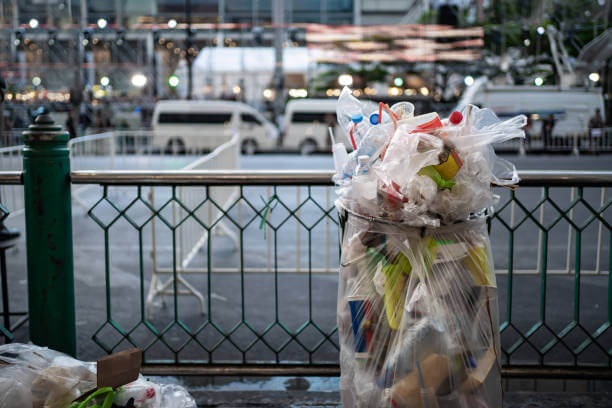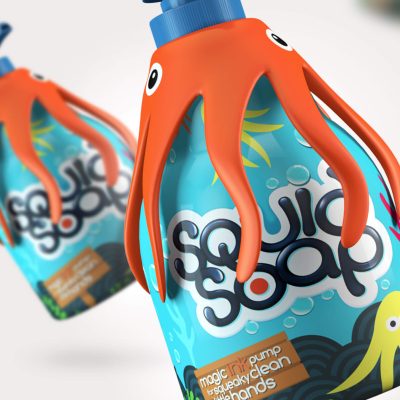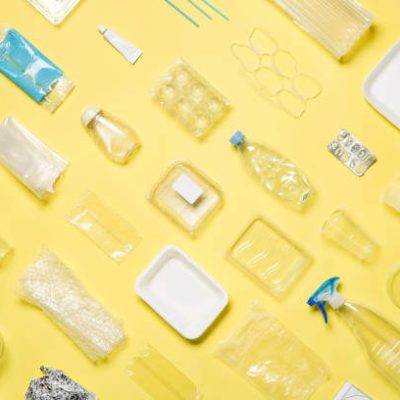How to stop using plastic as a business?
A challenge to reduce, replace, and stop using plastic.
“By replacing or removing just 1kg of plastic a day from your sales, you would be diverting the equivalent of 10,000 plastic water bottles from landfill/year!!”
Let’s get straight to it!
I will present how we can replace plastic in our businesses by identifying where and why it is being used, if it is necessary (exploring necessary), and the feasibility of replacing it. In many cases, for this to be possible, changes to your business model will need to be implemented.
I also invite you to start a challenge to replace and reduce plastic in your business, where you will find tools to measure your plastic footprint and start reporting.
If you need information and facts on why it is important to stop using plastic in your business and why recycling is not mentioned much in this post, check out the video in the last section of this article.
Production, transport, use, end of life- When are you producing plastic waste?
Packaging: Plastic packaging accounts for 40% of plastic waste, it can be functional and/or aesthetic.
⇨Functional: Let’s asses types of functionality.
- The packaging is used to protect the quality of the product like stopping it from spoiling, breaking..
- Or, it can be currently and seemingly integral to the use of your product like an applicator in a tampon or a plastic container for a take away business.
Is there a sustainable and financially feasible alternative to this package?
Do make sure that the material alternative you choose is actually sustainable. Some bioplastics for example are worse than plastic because they cannot be recycled in our facilities yet and are only biodegradable or compostable under very specific conditions that are unavailable.
And we can’t all start using paper can we?
Look for new materials in material libraries that are compostable or biodegradable in available conditions, or that actually and currently can be effectively reused and recycled like glass and aluminum. When it comes to LCA in application rather than just material they still perform better. (While not a type of plastic used in packaging, here is a study done PVC for example that shows application rather than material.)
(stay tuned for our coming talk and blog post on feasibility and new materials)

If another material does not seem feasible, changing your business model might be in order.
A change in business model can mean:
- How you deliver your product might change, maybe opting for refills, or selling in different locations.
- Changing who you partner with to produce, deliver, and dispose of your product.
- You might also make changes to the product to make it easier to package, like going for solid instead of liquid.
- Changing your relationship with your customer like take back programs, sharing, or leasing your product.
- Changing your target client if you need to elevate the quality of your product/ reduce or increase the price.
⇨ Aesthetic: This goes without saying, find a new way to present your product without plastic. The same standards mentioned apply to the material you choose as a replacement. Aesthetic can serve many functions but in terms of the environment it does not meet standards.
Maintaining a healthy profit margin is very important. Changing your business model might be needed to do so without raising your prices! With new tax cuts, subsidies, changes in buying trends pricing for these changes is more feasible.
The product is plastic: Durable or Single use.
⇨Durable: If your product is durable and can be used for a long time, how do you make sure that it is not ending up in landfill?
Your product is your responsibility.
Check if it is currently feasible for you to change the material.
If that does not work a change in business model like take back programs, sharing, or turning your product into a service might work.
⇨Your product single use.
Is a change in material to compostable or biodegradable under available conditions feasible? If your answer is no, look into why your product needs to be single use.
Is disposability your main selling point?
Note that for disposable, compostable, and biodegradable to be environmentally viable for mass production it needs be regulated and taken to the right facilities, currently this is not available.
Sometimes you might have to try your hand at a different business! Regulations on single use plastics and taxes will make business more difficult in any case.
Does it seem like plastic is necessary for your business?
Let’s explore “necessary” and your priorities.
Yes, profit is important and customer satisfaction and convenience is necessary, but some priorities need to change. The damage that plastic causes outweighs your individual business making profit. So long as there is poor plastic recovery and quality depreciation, feasibly designing out and plastic from your business in the near future is for you.
Around the office
- Try to eliminate single use plastics and plastic decorations from the office. This can save you money by buying less and on trash disposal.
- Go for second hand when you need tools, electronics, or furniture that is plastic. You can also sell what you don’t use anymore.
- Get your team involved in a plastic challenge! Try ours!
Where you can’t fix it just yet, offset!
It is very unlikely that you will be able to replace all plastics in your business at once. So, this will probably be a process for you and your business. But, a plan of action is needed to start replacing plastic. In that time, you can be taking other types of actions like offsetting, donating to plastic campaigns, volunteering, getting involved in solving the issue of plastic is welcome!
Calculating your plastic footprint can be a step to start reporting on plastic.
It is also very important that you start reporting clearly on what you can and can’t do, share your goals and progress because your customers want to know and the plastic you generate is your responsibility.
For a small business you can simply start by weighing a sample of each of the plastic items that you produce and sell. Then follow the formula provided on our challenge page to get your plastic footprint! If you are unsure, we can help you. Book a private call or attend our free group calls provided when you sign up for the challenge.
Why stop using plastic?
- An average of only 9% of plastic gets recycled.
- Recycled plastic is more likely to leach into its surroundings.
- Plastic causes many health issues like cancer.
- Plastic pollutes wildlife habitat and kills animals.
- To prompt producers to find alternatives making sustainable materials and business practices more feasible.
How to join this challenge?
Who is taking part?
This text briefly introduces visitors to your main services.

Service 1
A short description of the service and how the visitor will benefit from it.

Service 2
A short description of the service and how the visitor will benefit from it.

Service 3
A short description of the service and how the visitor will benefit from it.

Service 4
A short description of the service and how the visitor will benefit from it.

About the Author: Lara Mehanna
I’m a circularity and regenerative business consultant, trainer, and instructional designer. I work with SMEs on designing out waste and improving business experience. My story with sustainability started between kitchens and local farms over 10 years ago. I have had the privilege of establishing and assisting with the development of many green businesses in the areas of product design, arts, farming, and hospitality. You will find many more of these examples and applications in my courses and training programs.



